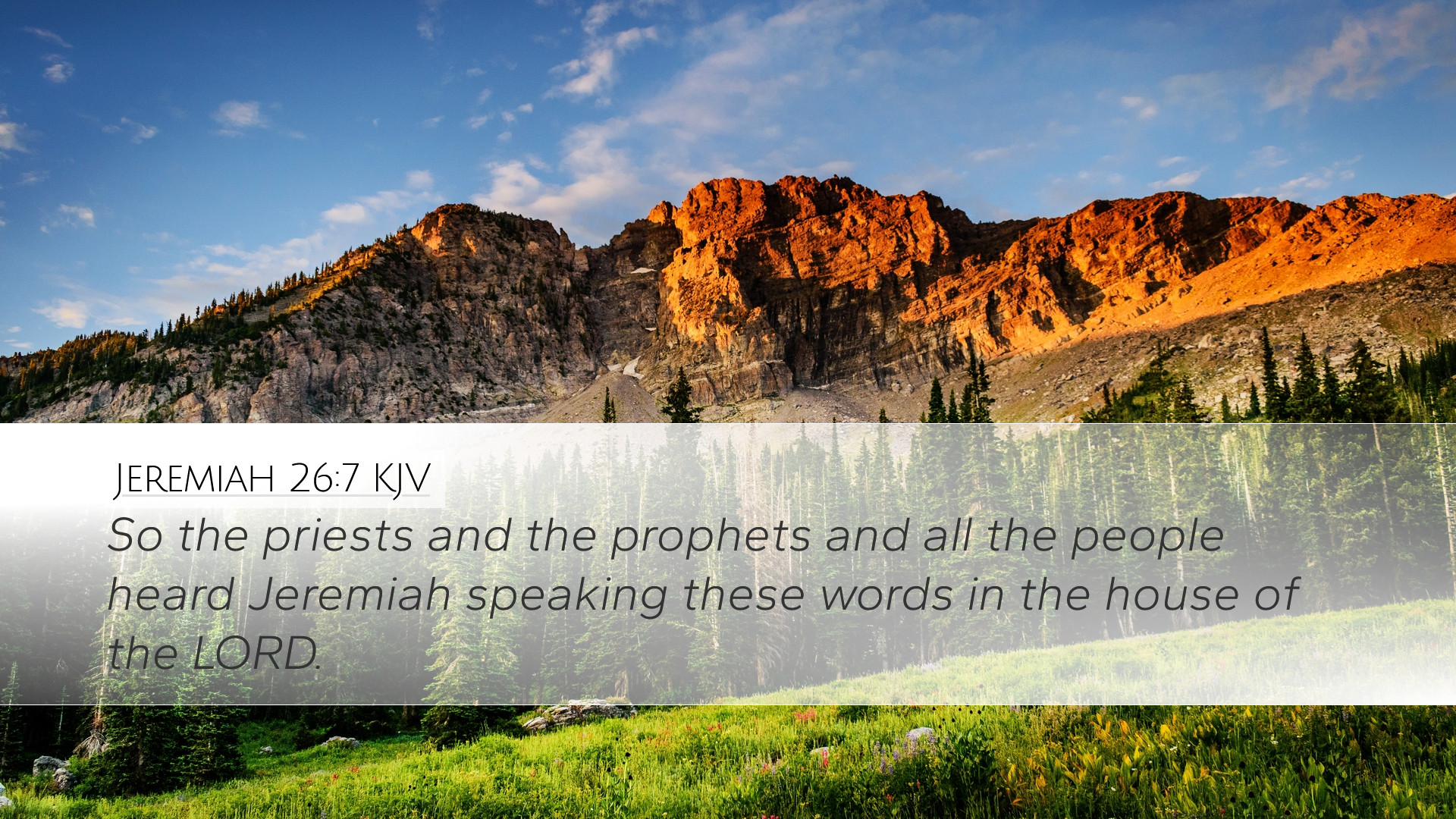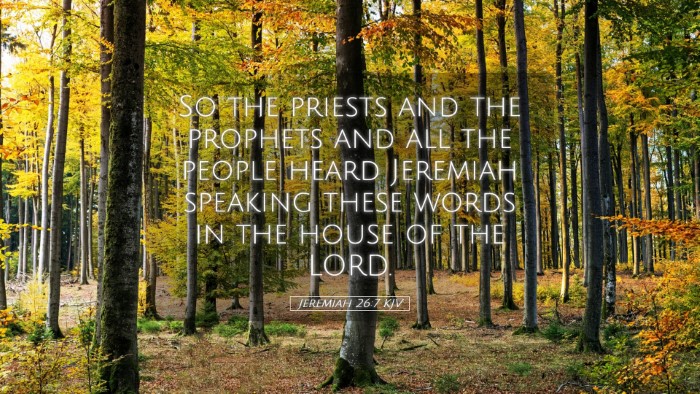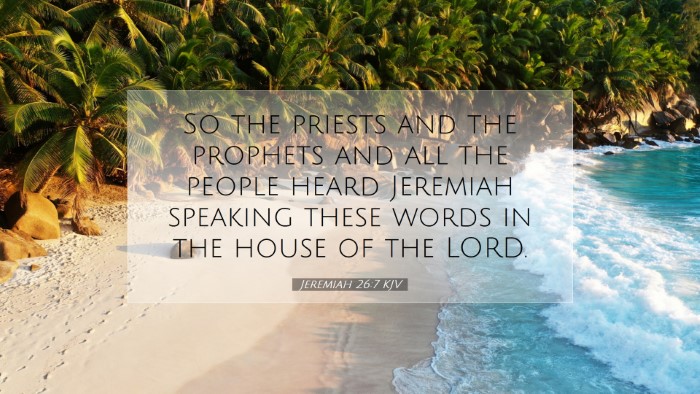Commentary on Jeremiah 26:7
Verse Text: "So the priests and the prophets and all the people heard Jeremiah speaking these words in the house of the Lord."
Introduction
Jeremiah 26:7 occurs in the context of Jeremiah’s prophetic ministry during a tumultuous time in Judah. The prophet had been instructed by God to deliver a message of impending judgment, urging the people to repent. This verse captures the critical moment when Jeremiah declares God's warning in the temple, an act that invites attention from various societal leaders.
Contextual Analysis
The setting is significant as it takes place in the house of the Lord, where not only the priests and prophets but also the common people gathered. This moment demonstrates the public nature of Jeremiah's message, highlighting both his courage and the seriousness of his warnings. The prophetic action in the temple underscores the clash between divine mandate and societal corruption.
Insights from Public Domain Commentaries
-
Matthew Henry's Commentary:
Henry emphasizes the import of the temple setting, where Jeremiah’s words were not just for posterity but for immediate application. He notes that the “priests and prophets” symbolize the religious establishment that should have aligned with God’s message but often stood against it. Their attention to Jeremiah's words indicates a moment of reckoning for the leadership that had neglected their duty to uphold truth.
-
Albert Barnes' Notes:
Barnes elaborates on the significance of public proclamation. He asserts that Jeremiah’s act of preaching in the temple signifies boldness in the face of potential backlash. He points out that the congregation's response to Jeremiah ultimately demonstrated the prevailing atmosphere of disbelief and resistance among those who held power, reflecting a wider societal apathy towards divine instructions.
-
Adam Clarke's Commentary:
Clarke discusses the reaction of the people and leaders, suggesting that the public hearing of the prophecy is crucial for accountability. He notes that the mixed audience—priests, prophets, and common folk—indirectly highlights the failure of religious leaders to heed God’s concerns. Clarke also remarks on the prophetic weight such public declarations carry, as they place both the speaker and the hearers in a divine spotlight.
Key Themes and Theological Implications
-
Accountability of Leaders:
This passage urges leaders to listen attentively to God’s prophets. The involvement of priests and prophets suggests that those tasked with spiritual oversight were not immune to the call for repentance and accountability.
-
Public Witness:
Jeremiah’s declaration in a public space underlines the significance of witness in the church today. The call for public declaration of faith and truth remains relevant; people must engage with the messages of Scripture openly, fostering a community of accountability.
-
Importance of Divine Revelation:
The proactive delivery of God’s messages through prophets like Jeremiah shows God’s continual desire for reconciliation and communication with His people. This reminds contemporary readers that God's Word requires both proclamation and reception, regardless of personal or societal challenges.
Pastoral Reflections
For pastors today, Jeremiah 26:7 serves as a compelling call to faithfully deliver God’s Word, even amidst opposition or apathy. Leaders are encouraged to reflect on the state of their congregations, assessing whether the truth is being proclaimed and heard in their communities.
Additionally, this passage invites introspection regarding one’s own reception of God’s messages. Are we listening? Are we responding? Jeremiah’s boldness challenges us to reaffirm our commitment to God even when it costs us socially or spiritually.
Conclusion
The events captured in Jeremiah 26:7 depict a poignant moment of interaction between divine authority and human agency. As such, this verse serves as a reminder for all believers to prioritize listening to God’s messages, foster community accountability, and engage courageously with the truths of Scripture. The interdisciplinary insights gathered from esteemed commentaries provide a rich tapestry of understanding that equips pastors, scholars, and laypersons alike to navigate the complexities of prophetic ministry.


